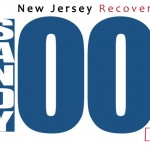Linda and Bill Tanchak are a lively New Jersey couple who have been together for more than 45 years. They married in 1968 and lived in Marlboro Township in Monmouth County for a majority of that time. In 2011, they packed up their house and moved into their new apartment on the shore in Asbury Park. Two years later, in late October, they would add another very important event to their timeline: surviving Hurricane Sandy.
THE STORM
What forecasters called “the perfect storm” made landfall in New Jersey on Oct. 29, 2012, unleashing winds of 80 mph and a vicious storm surge into communities along the shore.
The Tanchaks, like dozens of their neighbors, chose to stay in their beachfront apartment building on Ocean Avenue in Asbury Park. Asbury Tower—an affordable housing community for low-income seniors—is sandwiched between Deal Lake and the Atlantic Ocean, which left it significantly vulnerable to Sandy’s wrath.
“We had Irene last year that definitely caused us some issues, but when they say it’s the storm of the century you definitely heed the warnings,” said Nancy Hamsik, executive director at Asbury Tower. “It was definitely an experience that I will never forget and the residents will never forget in our lifetimes.”
Sandy’s strong winds knocked out power to the building, leaving its residents and staff in the dark with decreasing temperatures for almost a week. The building’s parking lot, elevator shafts and entire bottom floor were inundated with water, causing major damage to the tower’s activities lounge, in-house beauty salon and mini convenience store.
“We knew the storm was on the way and we did everything we could do to prepare – properly notify the residents, make sure they were ready, make sure they had their emergency kits on hand,” said Hamsik.
THE EVACUATION
Directly after power was restored, the remaining residents were forced out of the building due to an electrical fire in the basement. They were evacuated as a group to a shelter in Wall Township, and then later moved to a racetrack at Monmouth Park in Oceanport where massive tents were initially set up by emergency management officials to house utility workers from out of town who came to help with power restoration.
The Federal Emergency Management Agency and the Monmouth County Office of Emergency Management connected with this group at the shelter and assisted them with the FEMA registration process.
“When they got to Monmouth Park, they insisted on staying together in the same section, so they can keep an eye on each other,” said Carolyn Robertshaw, activities coordinator at Asbury Tower. “They helped each other out and if there was someone who couldn’t do something, others stepped in to help.”
THE INNOVATIVE, TEMPORARY SOLUTION
Just six miles away from Asbury Park in Neptune Township, a brand new Hampton Inn was left nearly unharmed by the storm. The local government told county emergency management officials about the empty hotel, which was four weeks away from opening before Sandy plowed through the Garden State.
“Our goal was to get this hotel up and running as quickly as possible and to establish it as a transitional shelter,” said Mike Oppegaard, county director for the Office of Emergency Management in Monmouth. “We wanted to make sure priority was given to survivors of Hurricane Sandy, especially those in the Monmouth Park shelter.”
THE WHOLE COMMUNITY EFFORT
In less than two weeks, the hotel was cleaned, furnished and powered up, and on Nov. 14, 2012, its doors opened to survivors of Hurricane Sandy. Thirty-two senior residents from Asbury Tower, including the group sheltering at Monmouth Park, were moved into the hotel as part of FEMA’s Transitional Sheltering Assistance program.
“This just proves that a cooperative effort made by all parts can really produce great outcomes,” said Oppegaard. “You just can’t script it any better than this story.”
The seniors sheltered together in the Hampton Inn under the transitional shelter program for five weeks while the staff and management at Asbury Tower worked diligently to get the complex back to normal.
During this period the hotel partnered with several volunteer agencies and faith- and community-based organizations to address the immediate needs of the survivors. From donated hot dinners to free rides to the doctor’s office to Thanksgiving church services, hotel staff worked alongside volunteers to provide these services and make the survivors feel as comfortable as possible.
THE HOMECOMING
Less than five weeks from the day Hurricane Sandy struck, Asbury Tower residents received the phone call they were waiting for: It’s safe to come home. On Nov. 28, the apartment complex reopened its doors.
“We were very happy to come back. Everybody was greeting everyone when they walked in,” said Bill Tanchak. “Now, there is a sense of camaraderie and we realize we’re a family.”
The common rooms in Asbury Tower were abuzz with laughter, gossip and story-telling. For the Tanchaks and their neighbors, who know exactly what it means to prepare together, shelter together and recover together, Hurricane Sandy will always be a warm chapter in history.
FEMA’s mission is to support our citizens and first responders to ensure that as a nation we work together to build, sustain, and improve our capability to prepare for, protect against, respond to, recover from, and mitigate all hazards.
Follow FEMA online at www.fema.gov/blog, www.twitter.com/fema, www.facebook.com/fema, and www.youtube.com/fema. Also, follow Administrator Craig Fugate’s activities at www.twitter.com/craigatfema.
The social media links provided are for reference only. FEMA does not endorse any non-government websites, companies or applications.



 TRENTON, N.J. — One hundred days after Hurricane Sandy made landfall, storm survivors in New Jersey are rebuilding with a hand from neighbors, nearly 28,000 volunteers and more than $1 billion in state-federal response and recovery assistance.
TRENTON, N.J. — One hundred days after Hurricane Sandy made landfall, storm survivors in New Jersey are rebuilding with a hand from neighbors, nearly 28,000 volunteers and more than $1 billion in state-federal response and recovery assistance.

